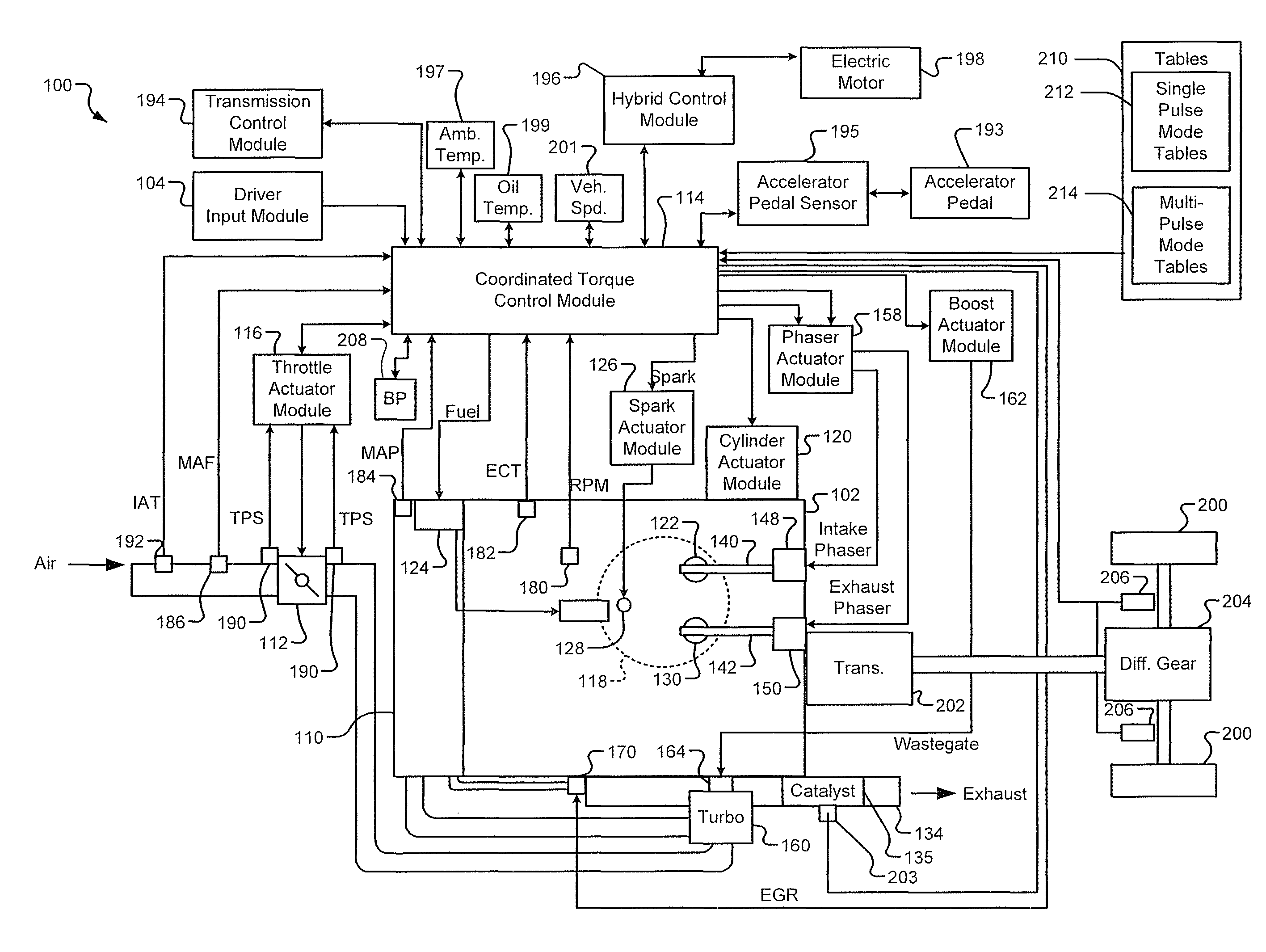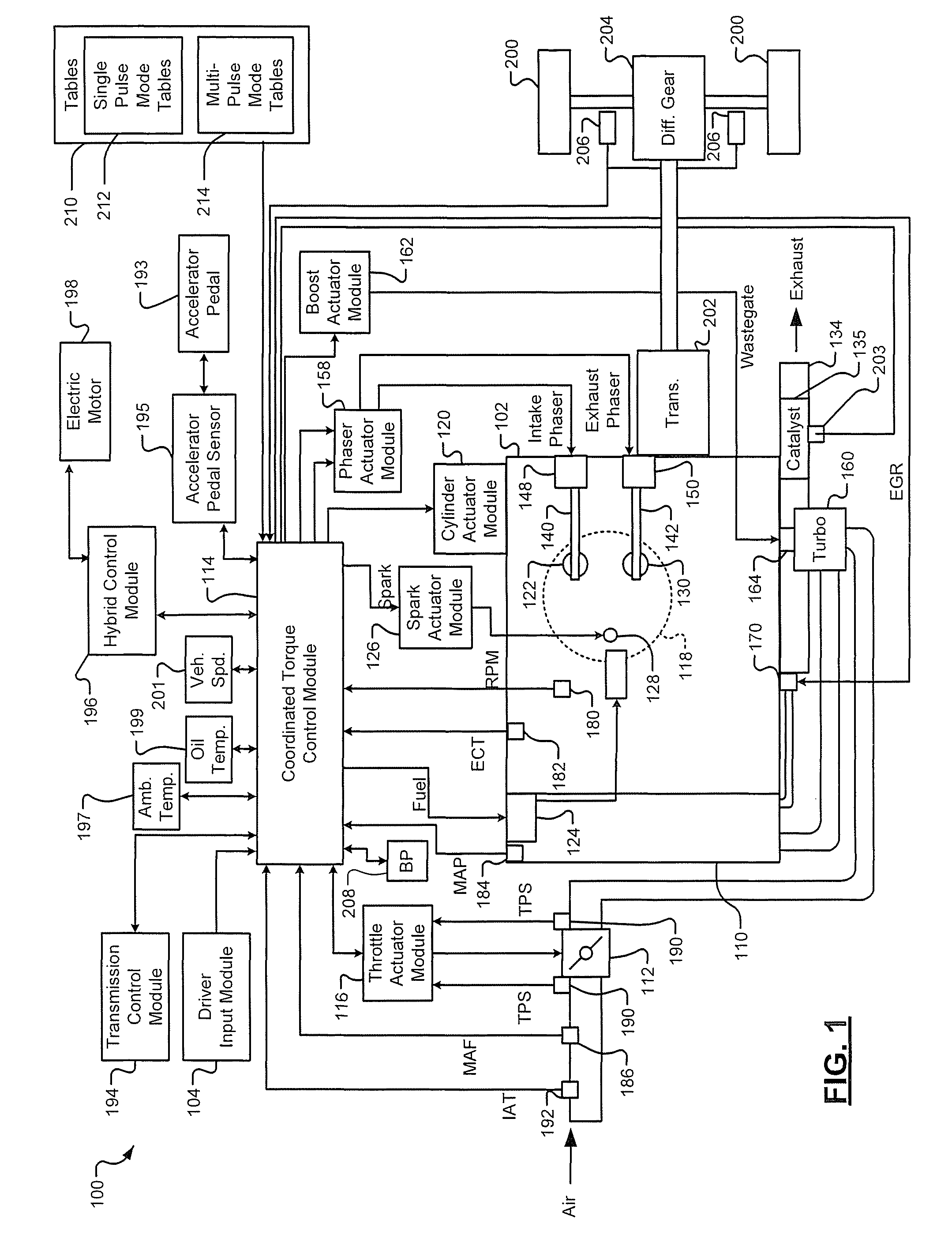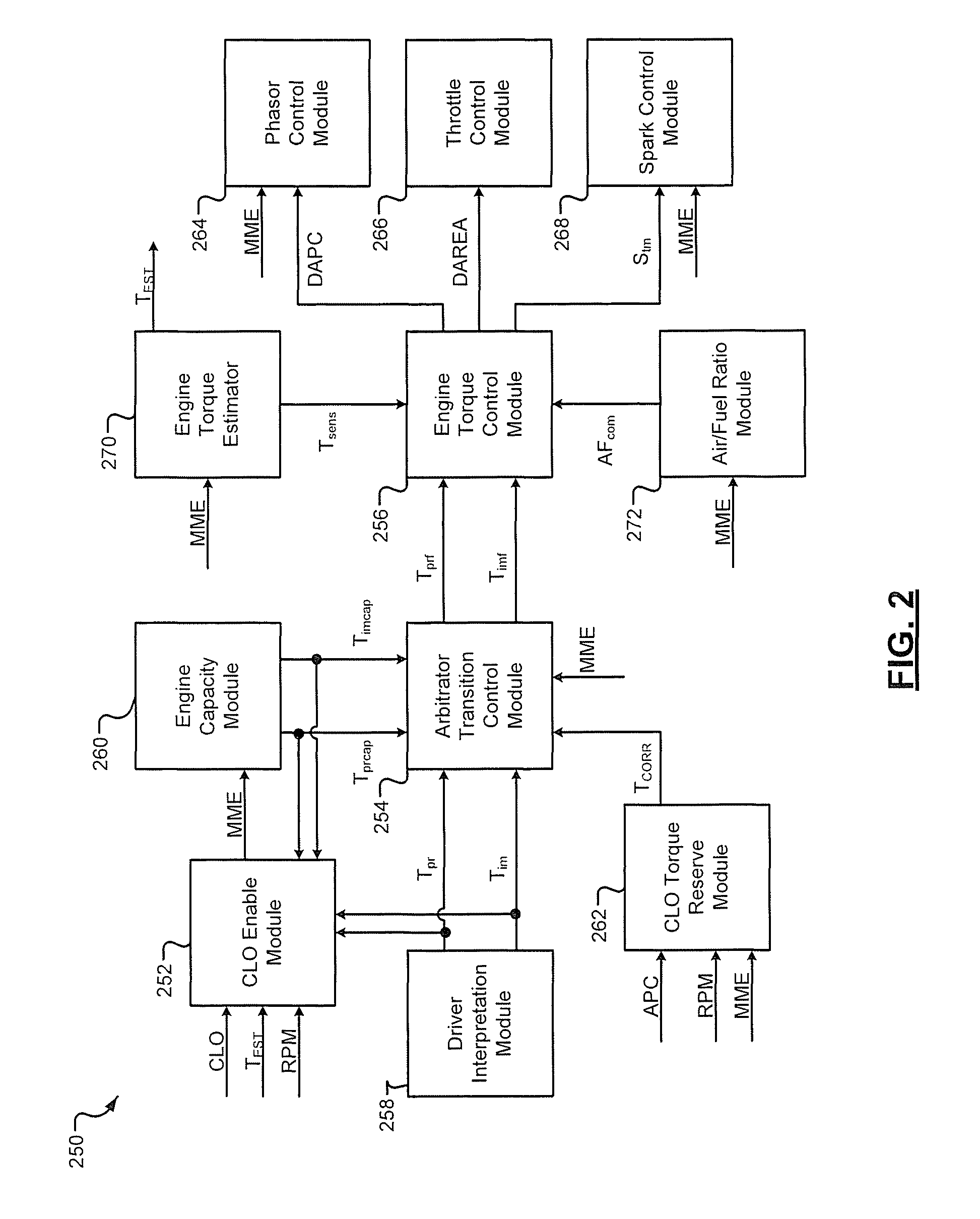Torque reserve and emission control system for coordinated torque control
a technology of torque reserve and emission control system, applied in the direction of electric control, machines/engines, instruments, etc., can solve the problems of limited coordinate engine torque control, slow response time of traditional engine control system to received control signals, and limited accuracy of engine torque output control
- Summary
- Abstract
- Description
- Claims
- Application Information
AI Technical Summary
Benefits of technology
Problems solved by technology
Method used
Image
Examples
Embodiment Construction
[0021]In the following description, different fuel injection pulse modes are described. Transitions between the fuel injection pulse modes may be performed based on performance of a catalyst light off (CLO). Catalyst light off refers to the quick heating of a catalyst of an exhaust system. A catalyst has an associated temperature operating range in which the catalyst is effective in reducing tailpipe hydrocarbon, carbon monoxide, and oxides of nitrogen emissions. By quickly heating the catalyst up to a temperature within the temperature operating range, tailpipe emissions are minimized.
[0022]A first fuel injection pulse mode, referred to as a single pulse mode, includes the injecting of a single pulse of fuel into a combustion chamber during a combustion cycle. A combustion cycle may, for example, in a 4-stroke engine, refer to a single sequencing through the 4 strokes (intake, compression, ignition, and exhaust). A single pulse mode may be used when an engine is not requiring maxim...
PUM
 Login to View More
Login to View More Abstract
Description
Claims
Application Information
 Login to View More
Login to View More - R&D
- Intellectual Property
- Life Sciences
- Materials
- Tech Scout
- Unparalleled Data Quality
- Higher Quality Content
- 60% Fewer Hallucinations
Browse by: Latest US Patents, China's latest patents, Technical Efficacy Thesaurus, Application Domain, Technology Topic, Popular Technical Reports.
© 2025 PatSnap. All rights reserved.Legal|Privacy policy|Modern Slavery Act Transparency Statement|Sitemap|About US| Contact US: help@patsnap.com



